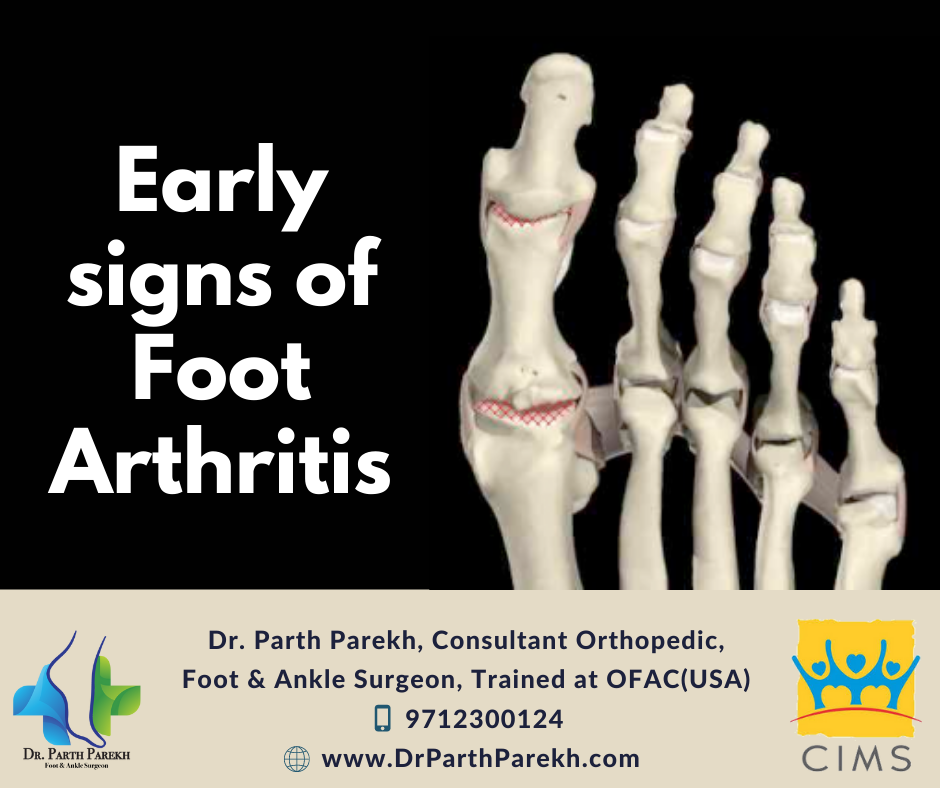
Arthritis can affect one or more joints in the feet. Hereditary tendencies, old injuries, poor footwear, and excess weight are a few predisposing factors of the disease. Because May is Arthritis Awareness Month, today Dr Parth Parekh is sharing some information regarding types of arthritis that affect the feet and some early signs of the condition.
There are over a hundred different types of arthritis – here are the four most common.
1. Osteoarthritis occurs because of the wear and tear of the joints. Weight-bearing joints like the hips, ankles, and knees are most often affected.
2. Rheumatoid arthritis is a long-lasting autoimmune disorder that usually affects the small joints and other body parts, such as the eyes, lungs, heart, blood vessels, and skin.
3. Gout is a more complex form of arthritis, which occurs when uric acid crystals accumulate in the joint. It typically affects the big toe and is characterized by redness, warmth, swelling, tenderness of the joint, and severe pain.
4. Psoriatic arthritis also affects the toes and causes swelling of the toes due to the inflammation of ligaments and tendons that are attached to the joint.
Some of the early signs of arthritis in the feet include the following:
- Pain: This is the earliest sign of any type of arthritis, which may increase after excessive activity, or when waking up in the morning.
- Warmth: The joints become warm and red due to the inflammation of the affected joints.
- Stiffness: Joint stiffness and limited range of motion of the joints are also symptoms of arthritis. The stiffness typically occurs in the morning after waking and decreases throughout the day with activity.
- Joint deformity: When the cartilage in the joints erodes in patches, the muscles, and ligaments in the joint also weaken resulting in abnormalities of the toes.
- Bone spurs: When joint damage deteriorates, extra bone may be formed in the joints – these are referred to as bone spurs and they look like knobby growths.
- Swelling: The joint may become swollen and inflamed due to joint damage and stress.
- Mucous cysts: These are rough fluid-filled sacs that look like small ridges in the feet, typically developing under the toenails and at the end of the toes.
